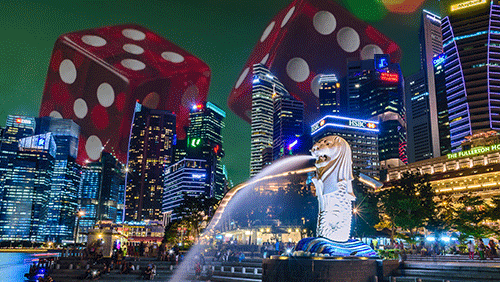“Weak” VIP segment will continue to plague the Singapore casino market this year, according to international credit debt watcher Fitch Ratings Inc.
 Unlike in other gaming markets, Fitch is less optimistic about Singapore and expects its two casino resorts to be roughly flat at US$4 billion in 2017 compared to last year
Unlike in other gaming markets, Fitch is less optimistic about Singapore and expects its two casino resorts to be roughly flat at US$4 billion in 2017 compared to last year
“Gaming revenues continued a downward trajectory in 2016 largely due to a steep contraction in the VIP segment, despite a 12.5 percent gain in Chinese visitors (the biggest source of VIP revenue) in first-half 2016,” Fitch said in its note. “Most revenue comes from foreigners, as local residents are required to pay a SGD100 [US$71] entrance fee [for 24-hour access] and marketing to locals is heavily restricted.”
Singapore’s two integrated resorts – Las Vegas Sands Corp.’s Marina Bay Sands (MBS) resort and Genting Singapore’s Resorts World Sentosa (RWS) – will also feel the competitive pressure from other gaming hubs in the Asia-Pacific region.
“Locals are more drawn to state-owned lottery games: Singapore Pools; which also operates sports betting. There are also gambling cruises and small-scale slot parlours,” Fitch added. The institution stated: “Moreover, Singapore will face added competitive pressure from Macau and the Philippines. We think the probability of the Singapore government awarding additional gaming licenses to be low, but acknowledge that it is a risk.”
The credit debt watcher also noted several risks to Singapore’s casino including the possibility of the state regulator to issue new gambling licenses. The MBS, which has 60 percent of the local gambling market, and RWS have 30-year concession agreements which due to end in 2036 and 2037, respectively.
Other risk to Singapore casinos, according to Fitch, includes the possibility of higher gaming taxes starting in 2022; a limited ability to expand physically; greater restrictions on Singapore residents’ participation; and a high reliance on a concentrated pool of high-rollers.
On the positive note, Fitch cited Singapore’s “low” gaming tax rate, a “duopoly structure at least through 2017”, and a central location in South-east Asia with well-developed transport links.